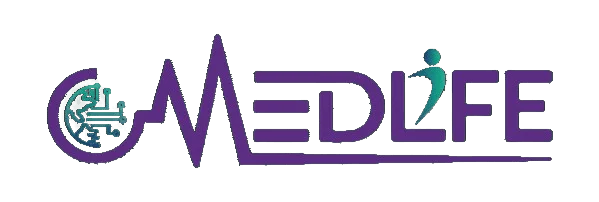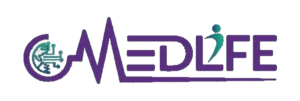Compliance, precision, and meticulous documentation are cornerstones for successful wound care billing. Let’s analyze your revenue cycle for 2025 and see how to avoid revenue loss.
Wound care practice loses 15-25% revenue due to billing. Revenue cycle improvement begins with 2025 CMS updates, precise documentation, and an efficient billing system from patient registration to payment collection.
Need Help with Wound Care Billing?
Book a free consultation to simplify your billing, speed up reimbursements, and cut down denials.
TALK TO AN EXPERTUnderstanding 2025 CMS Payment Updates
Recent CMS updates directly affect wound care reimbursements. Debridement codes (CPT 11042–11047) now have a 2.5% Medicare rate increase, and autologous PRP (G0465) reimburses $770.83 in non-facility settings or $890.18 with debridement.
prior authorization timelines are now 7 calendar days, not 10 business days. Thus, a complete documentation at submission is critical to preventing payment delays and avoiding holds.
New billable opportunities in 2025:
- G0541-G0543 Caregiver training codes
- 99453 and 99454 Virtual wound assessment via telehealth
- dNPWT will now have a standardized rate of $276.57.
Mandatory photographic documentation for chronic wounds and wastage records for skin substitute grafts are now required for reimbursement.
Improving Documentation Accuracy to Strengthen Collections
Incomplete documentation will continue to be the primary reason for delays or denials in payments. For greater reimbursement, every wound should include a complete description, including size, depth and specifically, where it is located, i.e, “plantar surface of right first metatarsal head”.
Critical documentation needed are:
- Wound bed, tissue type, drainage, signs of infection
- Diagnosis underlying wound (ex. Diabetes, Vascular Disease)
- Method, and Depth of Debridement
- Detailed list of all supplies and medications used topically
- Timestamped photographs required by CMS
Do not include vague statements which can result in “wound care performed.” Justifying notes should include specific findings to support the medical necessity for the treatment to be performed.
CPT Code Selection for Maximum Reimbursement
Choose the correct CPT codes based on the deepest tissue layer removed, not wound depth. This affects payment significantly for example, bone debridement (11044) reimburses more than subcutaneous debridement (11042).
| CPT Code | Service Description | Payment Impact |
| 97597 | Debridement, first 20 sq cm | 2.5% rate increase in 2025 |
| 97598 | Each additional 20 sq cm | Important for larger wounds |
| 11042–11044 | Surgical debridement by depth | Higher reimbursement with deeper tissue |
| 97605–97606 | NPWT application | Includes device and application fees |
| G0465 | Autologous PRP | Standardized 2025 payment |
For assessment-only visits, use E&M codes (99211–99215) and document time and decision-making to justify higher-level coding.
ICD-10 Coding That Establishes Medical Necessity
Precise diagnosis coding strengthens claims and prevents denials. Use full stage and location details for example, L89.604 (heel pressure ulcer, stage 4) and connect conditions such as E11.621 (Type 2 diabetes with foot ulcer) for medical necessity.
Vague coding or missing details often delay collections by up to 60 days.
Modifier Strategy to Prevent Payment Loss
Correct modifier use prevents bundling and claim rejections.
- Modifier 59: Use for distinct procedures on separate wounds.
- Modifiers LT/RT: For bilateral wounds, allowing both sides to be billed.
- Modifier 25: Use when an E&M service accompanies a procedure.
CMS now requires clearer documentation support for modifiers, so accuracy is key to avoiding audits or payment recoupments.
Common Billing Errors That Reduce Collections
Revenue loss often occurs when billed data doesn’t match clinical notes. If documentation shows 25 sq cm and you bill 40, it leads to downcoding and payment cuts.
Some of the more frequent and costly errors include:
- Missing prior authorizations
- Insufficient proof of medical necessity
- Incomplete progress notes
- Missing documentation for supplies
Each error increases days in accounts receivable (AR) and administrative costs from appeals.
Denial Management to Recover Lost Payments
Track and categorize denials to identify recurring issues. Review within 7 days and appeal within 30–90 days using clear clinical documentation. Proactive denial analysis helps recover revenue and reduce future payment loss.
Front-End Process Improvements
The start of revenue optimization occurs before the provider ever delivers the service. Avoid bad debt by checking insurance and benefits early. Collect co-pays or deductibles at the time of service to safeguard cash flow.
Payment delays from upstream authorization requests are also eliminated through complete requests.
Accelerating Claims Processing for Faster Payment
Claims should be submitted within 24–48 hours while the records are current. Also, use claim-scrubbing software to make sure there is at least a 95 clean claim rate.
Key things to keep an eye on:
- Days in Accounts Receivable: under 45 days
- Clean claim rate: 95%+
- Denial rate: under 5%
- Collection rate: 95%-98% of the charges
Weekly AR reviews help keep problems from creeping in and causing payment delays.
Technology Investment for Better Performance
Modern billing software automates checks for claim eligibility and edits, and tracks claims in real time. Integrated EHR systems lower the number of errors and speed payment of practices that use automation to about 30–40% fewer denials. This also improves cash flow.
Leveraging 2025 Skin Substitute Guidelines
The new CMS rules restrict the use of skin substitutes to only what’s FDA-approved. To meet the payment requirements, document your failed treatments, photos, and wastage. There is an LCD that will not be in place until January 2026, which is enough time to align your documentation.
Staff Training to Reduce Payment Leakage
Staff training helps reduce repetitive mistakes and should be done regularly to meet the required standard for updated CPT, ICD-10, and payer rules. Having a payer-specific reference sheet will improve claim approval rates.
Patient Payment Strategies That Improve Collections
Give clear cost estimates and verify coverage before treatment. For procedures of high cost, set up payment plans with automatic payment withdrawals. This will help smooth cash flow and reduce the cost of collection follow-up.
Need Help Improving Your Wound Care Revenue Cycle?
Collaborate with certified wound care billing specialists at MedLife to increase revenue, lower denials, and improve cash flow.


